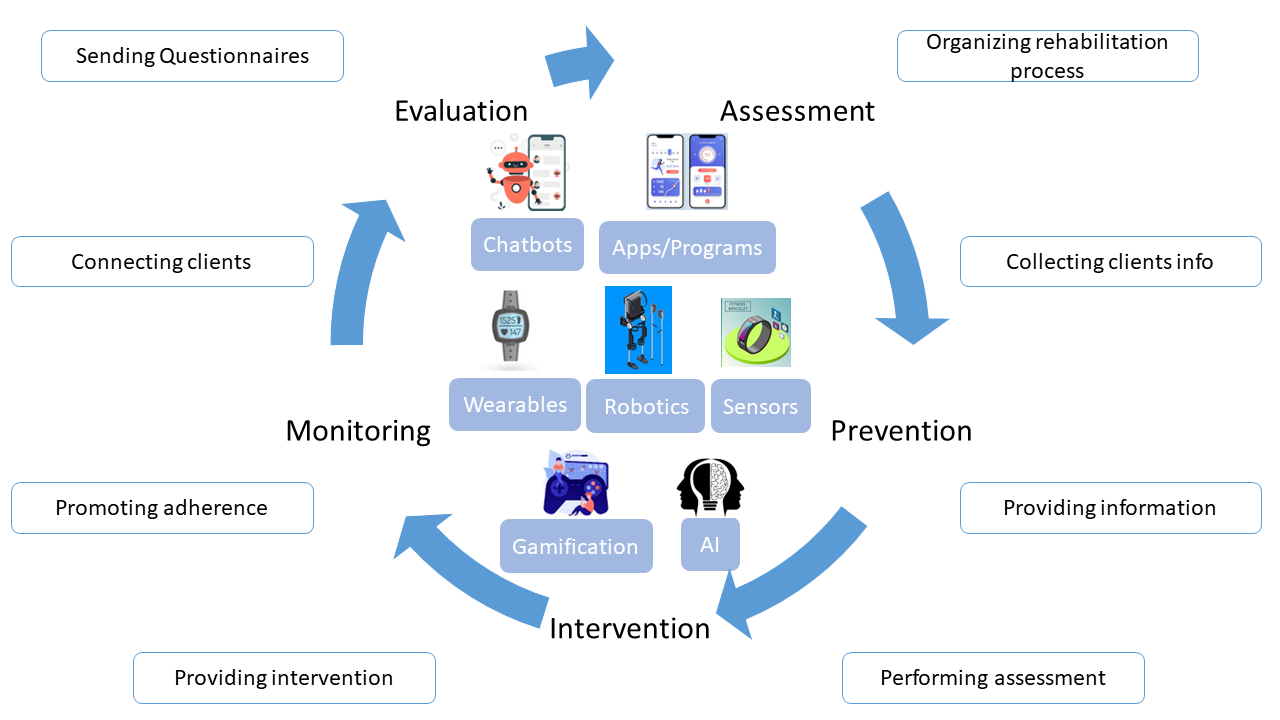1.1 Scope
The rapid growth of the internet and advances in digital technologies have not only an impact on our private life, but it has also an impact on healthcare and on the health care system. In the last years, digital technologies have increasingly been used in this sector. Digital technologies are based on (computer) hardware, software, and connections. This could include apps, computer programs, artificial intelligence but also devices like smartphones, tablets and laptops and many more. For more information, see chapter 6 "Technologies".
When including digital technologies in rehabilitation, we call it Digital Rehabilitation. The term "Digital Rehabilitation" is not very widely used, yet. Digital Rehabilitation may be mixed with the term digital health and considered as a synonym. However, Digital Rehabilitation is not synonym with digital health even though there may be some overlaps. We define Digital Rehabilitation as a set of interventions using digital tools, technologies, and services to optimize functioning, reduce disabilities, monitor and evaluate health status of people with health problems. Digital Rehabilitation is thus an umbrella term that means not only the tools that are used in rehabilitation; It aims to enable a digitally-driven process as a whole. Digital technologies have many possible applications in the healthcare system. For example, they can be applied for the management of the client journey in the health care sector e.g. think of the registration at the health care provider and/or for the rehabilitation of clients as such [1]. In Figure 1, you can see various application possibilities of Digital Rehabilitation during the client journey.

Figure 1. Application of Digital Rehabilitation in the health care sector.
The decision to use Digital Rehabilitation is always based on the client's needs in order to optimize the rehabilitation outcome, reduce disability and empower the client and the community. The decision takes into account the client's daily life and the choices they make. The decision to incorporate digital technologies in rehabilitation is taken jointly by the healthcare professional and the client.
With Digital Rehabilitation, the rehabilitation process can be more than just activities tied to the presence of a healthcare professional, traditional guidance and place. At its best, it can flexibly combine the self-management of rehabilitation and rehabilitation guided by a healthcare professional. Digital services do not fully replace competent healthcare professionals, but the combination may offer many advantages for the client, the healthcare professional and for the health care system.